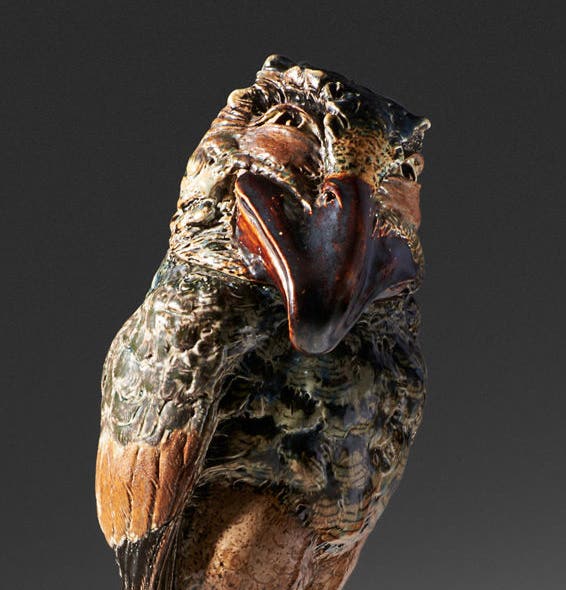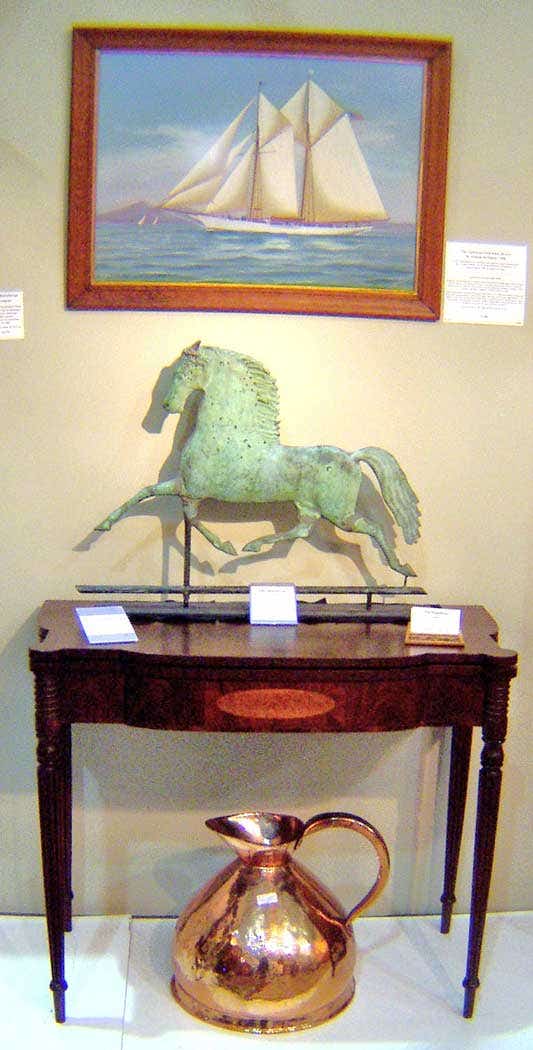Establishing chess set provenance using London’s directories
Collector, historian, and guest contributor Jon Crumiller provides an intriguing examination of using directories to determine provenance of chess sets.
By Jon Crumiller
For collectors, figuring out when an antique chess set was made, and who made it, is important, but often difficult. But for [any] items made in London, things are considerably easier – there is always the directory.
For a collector, the two most important pieces of information about any object are its age and its provenance. Over the centuries, many of the world’s finest chess sets were made in London and that turns out to be a boon for collectors because the city had what might be the single most useful resource ever for finding information about antique objects – business directories. By using the directories like a children’s flip book (with one image on each page), it is possible to find and track the great chess set makers that made London their home.
Business Directories Provide Societal Snapshot
The first real London business directory dates to 1677, but appears to be out of date before long. As the city began to grow rapidly in the mid-18th century — from an estimated 750,000 people in 1760 to over 1.4 million people by 1815 – business activity grew at the same rate. To keep track of the many merchants, shops, and tradesmen and tradeswomen, it quickly became necessary for people to have access to newer listings.
Among the earliest to be published and updated annually was Kent’s Directory of London, which first appeared in 1732. The London Post Office began issuing its own annual directories in 1800. Many other publishers followed suit, including Lowndes, Payne, Wakefield, Pigot, Kelly, and Robson, to name a few. As the directories grew, different types appeared, organized alphabetically, by trade, or by street names.
Below is a typical page from the 1815 London Post Office Directory (which is in alphabetical order), with one entry highlighted – Thomas Jaques, the father of John Jaques, manufacturer of the earliest Staunton sets starting in 1849.
Knowing Names and Makers Opens Doors
The “flip through” technique can be a very powerful tool for finding information about chess sets. For example, the chessboard shown (item #158) was listed in a Phillips auction on Nov. 7, 2000. The item’s description in the catalog states: 158 An English rosewood and satinwood inlaid chess board, by Blassart, Turner & Toyman, circa 1840, the board with trade label on the reverse: ‘Blissart, Turner & Toyman No. 209, Opposite Ayr Street, Piccadilly’, 32.5cm. (12½ in.) wide £150-250
Note that the name of the firm that made the board, reportedly around 1840, is given with two different spellings, as Blassart and Blissart, so at least one of them must be incorrect.
This is where the directories can be very useful. The 1808 London Post Office Directory shows a listing for Edward Blissatt, Turner and Toyman at the address given in the auction catalog. I’ve represented the 1808 directory as a single point on the timeline (top, next page).
One thing is immediately apparent: the two names in the catalog are both wrong! The correct name is Blissatt. But what about the stated time frame, “circa 1840”?
Using directories from 1805 through 1823, it is possible to fill in the timeline of Edward Blissatt’s career.
Compare and Contrast
For the sake of comparison, the dating in the auction catalog, “circa 1840,” is shown on the timeline
(above) as a vague 20-year period (1830-1850). But the listings in the directories provides a different, and more accurate, picture. Blissatt first shows up in the year 1805, at which time his place of business was 209 Piccadilly. In 1821, he moved down the block to 206 Piccadilly, and then, a couple of years later, he disappeared altogether from the directories.
It is clear that the English rosewood and satinwood inlaid board is actually from the period 1805-1819.
Here is another example of how the directories can be helpful. The fine ivory playing set shown below was manufactured by George Merrifield, a first-rate turner and carver, who was mentioned in an earlier article as having apprenticed under John Calvert in 1807.
The box is original to the set, as determined from its provenance. Additionally, an expert can immediately identify the set as a Merrifield-manufactured set by the specific characteristics of the pieces. (The most distinctive are the carved knight heads.)
Turn to Trade Label for More Insights
The trade label provides the information needed to date the set.
Merrifield’s address is clear from the label: No. 11, Great Turnstile, Holborn (Lincoln’s Inn Fields).
The listings for Merrifield’s business including the following:
1818 Merrifield Geo. Manufact. Ivory Turner, 11, Great Turnstile
1819 Merrifield Geo. Manufact. Ivory Turner, 11, Great Turnstile …
1827 Merrifield Geo. Manufacturing Ivory-turner, 11, Gt. Turnstile
1828 Merrifield Geo.(& carver) 11 Great Turnstile, Holborn [Ivory and Hard Wood Turners]
1829 Merrifield Geo. Manufacturing Ivory-turner, 13 Great Turnstile
1830 Merrifield Geo. Manufacturing Ivory-turner, 13 Great Turnstile …
1848 Merrifield Geo. ivory turner, 13 Great Turnstile, Holborn
1851 Merrifield Geo. Ivory turner, 13 Great Turnstile, Holborn …
1852W Merrifield G. ivory turner, 46 Southampton row, Russell sq.
1853 Merrifield Geo. ivory turner, 46 Southampton st. Russell sq.
1854 Merrifield Geo. ivory turner, 46 Southampton rw. Russell sq.
1855 Merrifield Geo. ivory turner, 46 Southampton rw. Russell sq.
Merrifield’s shop was located at 11 Great Turnstile from 1818 to 1827, moved two doors down to 13 Great Turnstile from 1829 to 1851, and then he relocated to 46 Southampton row in 1852 until 1855. So the set and box can be accurately dated to within a ten-year period: 1818 to 1827.
Matter of Eliminating Possible Identities
There are other things that can be learned about Merrifield’s life, like when it ended. His last entry in the directories is 1855, which immediately becomes the prime candidate. Indeed, that was the case, as his name appears in the death notices from 1855.
Armed with the names, addresses, and date ranges provided by the directories, antique Georgian and Victorian chess items from London can be dated almost immediately. Shown above is another ivory set along with the listings from several years for John Barr, the set’s maker. Barr’s address is listed as 69 Long Acre on the bottom of the white king.
As it turns out, that address is the only one for Barr in the directory entries.
Barr appears in the directories in 1851 and disappears after 1859, always at the 69 Long Acre address. So the set can be accurately dated to 1851-1859.
Inspect Objects For Clues
(Historical documents can sometimes turn up some oddities as well. John Barr’s father successfully petitioned the courts in 1848 to cancel Barr’s apprenticeship – to the ivory and brass turner at the same address at which Barr was subsequently located: 69 Long Acre!)
Next up is an antique chess table with a penwork-decorated chessboard. Penwork was a sought-after and beautifully detailed art form in England in the first half of the 19th century.
On the underside of the table base is a stamp that provides all the information needed to date the table with accuracy.
Manufacturers took care that their stamps and labels had up to date information, including in the directories. This company changed from Miles W. in 1821 to Miles & Edwards in 1822. Then in 1847, the company was acquired by another firm, Charles Hindley & Sons. The table can be accurately dated to the period 1822-1846.
Piecing Together an Identity
Edward Spurin was a turner who specialized in children’s toys and books. He first appears in the 1848 directory and continues through 1869. Alas for poor Spurin, I learned through correspondence with his descendants that his career did not end peacefully in retirement: In 1869 he was thrown from a carriage and suffered fatal injuries.
I have a Spurin-labeled games compendium in my collection. The set within the compendium is a simple German Barleycorn pattern (now often called Ropetwist, due to the absence of barleycorn leaves on the stems of the kings and queens).
As can be seen in the Spurin chess set image, the label contains further clues to help narrow the date range. The label includes the honorary phrase, “Turner & Toy Manufacturer to Her Majesty…” When such an honor was bestowed, the manufacturer or retailer was quick to update his labels and directory entries with that designation.
Using that additional information, the date range can be narrowed from 1848-1869 to 1854-1869.
The label also says “late Edlin.” This phrase means “had formerly worked for Edlin” or “this location was formerly Edlin’s” or (as in this instance) both. Usually that would mean that the former proprietor had had a long-term thriving business. This is certainly the case for the Edlins: Thomas Edlin, turner and toy manufacturer, was at the 37 New Bond Street address from 1844 to 1846, and his father, Edward was there from 1811 to 1843, and before that at 34 New Bond Street, starting all the way back in 1794!
Directory Appearance Helps With Dating a Set
The firm of Edwards & Jones first appear in the directories in 1854 as stationers, booksellers, and
the “depôt for Bagster’s polyglot bibles” at 161 Regent Street. Later, they were a depôt for the firm of Thomas De La Rue, which (amongst many other products) manufactured a pocket travel chess and draughts set, with slide-in pieces, that closely resembled the Staunton pattern, although the De La Rue set was registered three years earlier, in October 1846. Edwards & Jones lasted until 1938 (as Edward & Sons from 1899 onwards), and were honored as “stationers by appointment to T.M. the King and Queen” in 1915. In my collection is an ivory Staunton set, stamped on the bottom of the white king with their name and the address of an “Ivory Warehouse” at 167 Regent Street.
The ivory warehouse opened in 1873 and last appears in the listings in 1886, hence the set also dates from that time frame: 1873-1886.
The Edwards & Jones set in the photo is displayed on an antique chessboard – and underneath the board is a “Parker” label.
Thomas Parker’s workshop started at 19 Air Street in 1811, after which he moved to 22 Warwick Street in 1821, then moved again to 32 Warwick Street in 1829 before disappearing from the directories after 1832. So the chessboard can be dated to 1821-1828.
Family Lineage Reveals Key Details
The next example is from the retailer William Leuchars. Leuchars followed in the footsteps of his father, James, and his mother, Lucy, each of whom have entries in the directories, covering the periods 1799-1827 and 1828-1847, respectively. (Similar to the Calverts, Lucy Leuchars took over when her husband passed away. A son, also named James, briefly took over in the early 1830s, but he also died.) William inherited the business in 1848, and he was the very first retailer of the now-ubiquitous Staunton-pattern sets, first manufactured by Jaques in 1849.
An indication of the high quality of items sold by the Leuchars family is the set shown by James Leuchars, circa 1805-1810.
Another Leuchars chess set, in its original board-box, this time from William Leuchars, has a different address label from the others: 3 Cheapside. The entries in the directories reveal the applicable date range for this set.
Interestingly, there was a precursor chess retailer to Leuchars at 3 Cheapside: William Dunnett. Dunnett’s grandfather and father had been listed since 1791, as perfumers and toymen. Eventually, there was a handoff from Dunnett to Leuchars around 1854:
Examine Multiple Directory Sources to Confirm
The method I used to date all these sets occasionally runs into some problems. Numbers on some streets were changed during the Georgian and Victorian eras. If Piccadilly had been renumbered circa 1820, then it would be possible for 209 to have been renumbered to 206, i.e., the location would have remained the same, even if the number had changed. (However, this was not the case for Edward Blissatt’s addresses.) A few addresses on chess items that I was researching referred to other cities. One item from the 19th century was only labeled 46 Cornhill. I eventually discovered that it was made at 46 Cornhill in Boston!
Editor’s Note: Visit your local library, historical society, or museum to find directories to aid in establishing your collection’s age and provenance. We’d love to hear about your research adventures, as well as tips to share with our readers. Please email them to ATNews@fwmedia.co.








